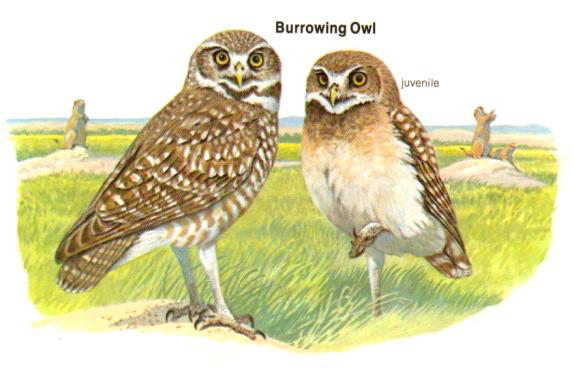How many Owl Species live in Santa Barbara?
Ten owl species call Santa Barbara County their home. Eight live here year-round, and two visit us during their winter migration. The most commonly seen year-round owls are Great Horned owls, Barn owls, and Western Screech owls. Rarely seen but also year-round county residents are California Spotted owls, Long-eared owls, Northern Pygmy owls, Northern Saw-whet owls and Flammulated owls.These owls live either higher up in our mountains, or further removed in our wilderness areas, away from people, cities and roads. The two species that visit us in winter are Short-eared owls and Burrowing owls.
The largest of our local owls is the Great Horned owl – it's as big as a red-tailed hawk. Only the Great Gray owl of the cold North is larger. Our smallest owl neighbors are the Northern Pygmy owl and Flammulated owl - just a bit smaller than a Scrub jay. These shy little owls can be found (or perhaps not found) in the oak and pine forests of the Santa Ynez Mountains.
All owls eat other animals, including mammals, birds, reptiles, fish and insects, catching and killing them with their strong talons. Most owls, however, prefer mice and other rodents to other foods. Amongst owls (except for burrowing owls) the females are larger than males – up to one third larger. Most, but not all owls are nocturnal. Great Horned owls, Short-eared owls, Burrowing owls and Northern Pygmy owls may also hunt at dawn and dusk - and even in the daytime, depending on how hungry they are or how many mouths they have to feed.
Except for the Short-eared owl, which may build a simple nest on the ground, owls do not build nests, but nest in hollow trees or small caves along cliffs,or take over other birds' nests.
Owls truly are amazing creatures: their incredible night time vision, extremely developed sense of hearing, and the ability to fly silently, are just a few of the things that have amazed people throughout history. But one thing is sure – it is up to us now to protect their habitats for both their and our own future.
Note: To the best of our knowledge no local owls have been observed carrying mail to and from Hogwarts or any other wizards’ dwellings.
To learn more about owls, visit the“Owl Pages”on the world-wide web:
http://www.owlpages.com
To learn more about all kinds of birds, visit the Cornell website
http://www.allaboutbirds.org
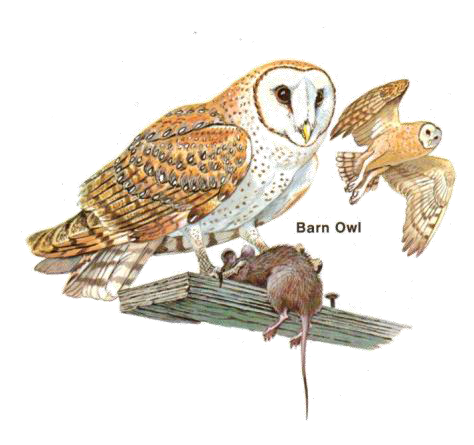
Barn Owl
Barn owls are very efficient mouse and rat-traps. Farmers often build nest boxes to attract them to their fields. Because of a shortage of unoccupied tree cavities and barns for nesting, our local Barn owls have adapted to nesting in palm trees. Barn owls have the most highly developed sense of hearing of any owl, and often catch their prey by sound alone. You may hear their eerie screech late at night. Barn owls are strictly nocturnal, and go into a deep sleep in the daytime. They are also very beautiful.
Short-Earned Owl
A few Short-eared owls come to Santa Barbara every winter to enjoy our mild climate and plentiful food. They are one of the more diurnal species, meaning that they hunt at dawn and dusk, not only in the deep night as many owls do. They are also the only owls that construct a simple nest.
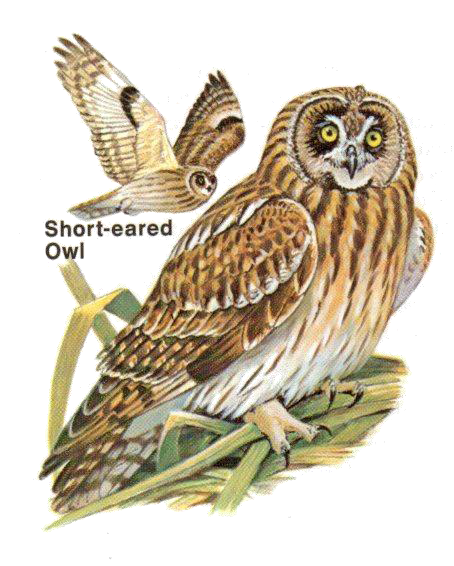
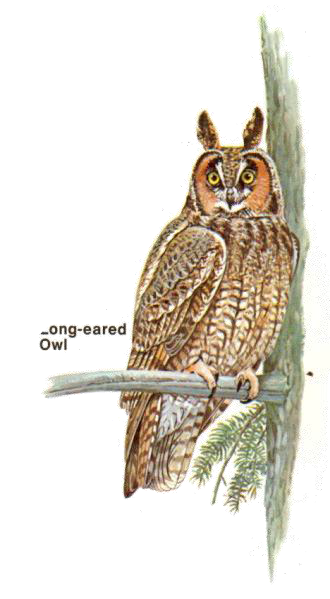
Long-Earned Owl
Long-eared owls nest tucked away in the Santa Inez Mountains and the San Rafael wilderness. They prefer living in dense forests away from people and civilization. They eat small mammals and some birds.
Great Horned Owl
The second largest and considered the fiercest owl in North America, the great horned owl is at the top of the food chain.
Depending on where they live, Great Horned owls adapt to a varied diet, which include skunks, great blue herons, baby alligators, armadillos, porcupines, and even an occasional house cat. Great Horned owls also have a soft side: they are gentle and devoted parents that stay with their young for several months after they fledge teaching them hunting and survival skills.
Depending on where they live, Great Horned owls adapt to a varied diet, which include skunks, great blue herons, baby alligators, armadillos, porcupines, and even an occasional house cat. Great Horned owls also have a soft side: they are gentle and devoted parents that stay with their young for several months after they fledge teaching them hunting and survival skills.
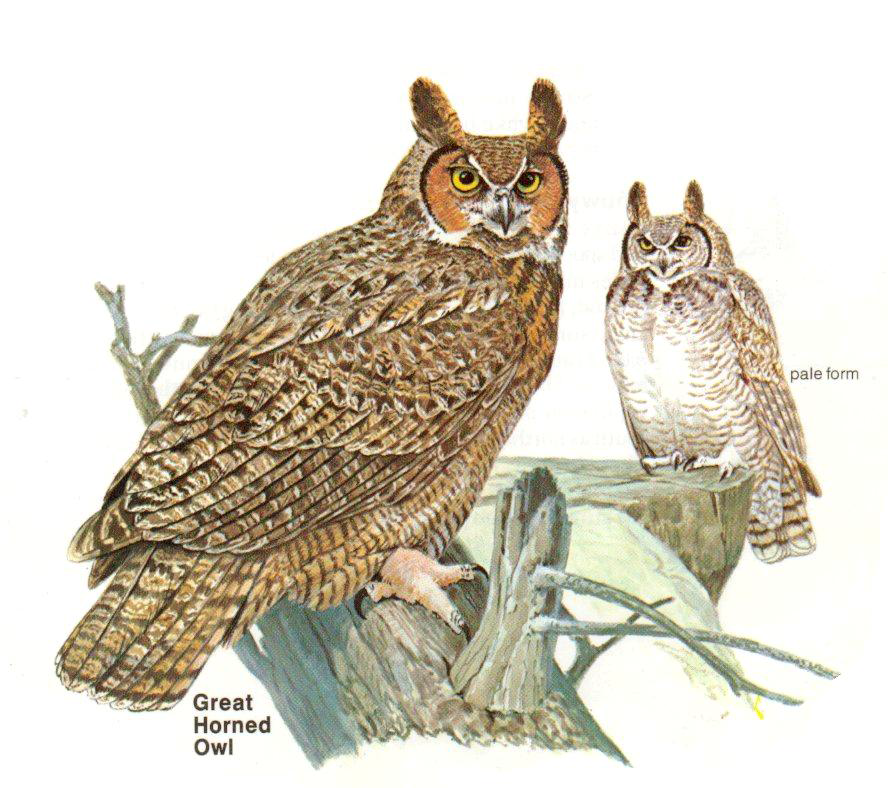
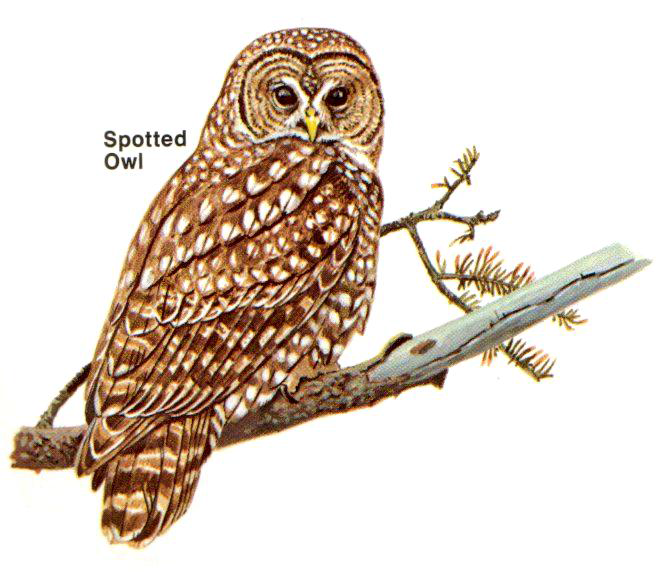
California Spotted Owl
Smaller than the Great Horned owl, and although rarely seen, a few California Spotted owls live in remote dense forested canyons in our San Rafael wilderness. As this species continues to face shrinking old-growth forest habitats,they are listed as a “threatened” species.
Western Screech Owl
About the size of a baseball, this owl is still fairly common, but becoming more rare on the South coast. Screech owls prefer open forest areas such as oak trees interspersed with meadows. Like other small owls, they like to nest in tree cavities. Since natural tree cavities are in high demand by many bird species, screech owls have adapted to accepting human-made nest boxes.
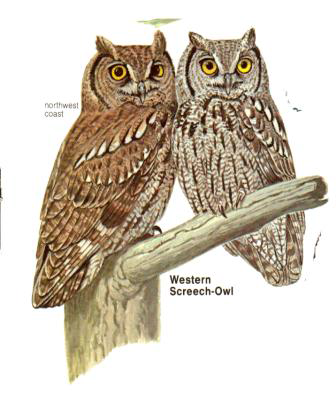
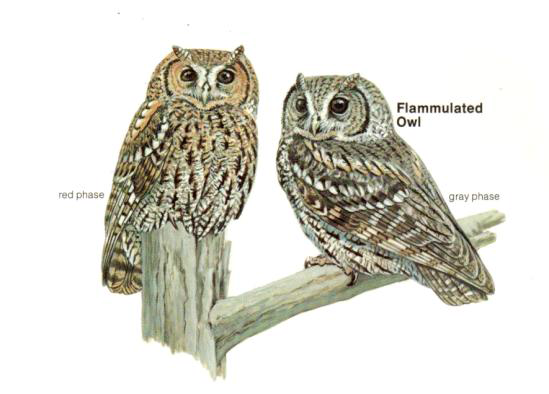
Flammulated Owl
This tiny owl it is found only in our county’s highest elevations, in forests of ponderosa, Jeffrey, and sugar pines, such as at Figaroa mountain. It is one of the most migratory of North American owls, but, being so secretive, very little is known about their migration patterns. They feed almost exclusively on insects
Northern Pygmy Owl
Another tiny owl, only six inches long. This owl also prefers living in higher elevations amidst a variety of woodland and forest habitats. Northern Pygmy owls are more active in the day than most other owls. And, unlike the Flammulated owl, its diet combines insects, small birds, reptiles, and mammals. Pygmy owls also nest in tree cavities.
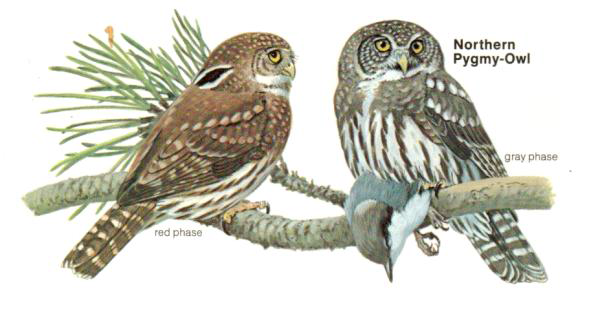
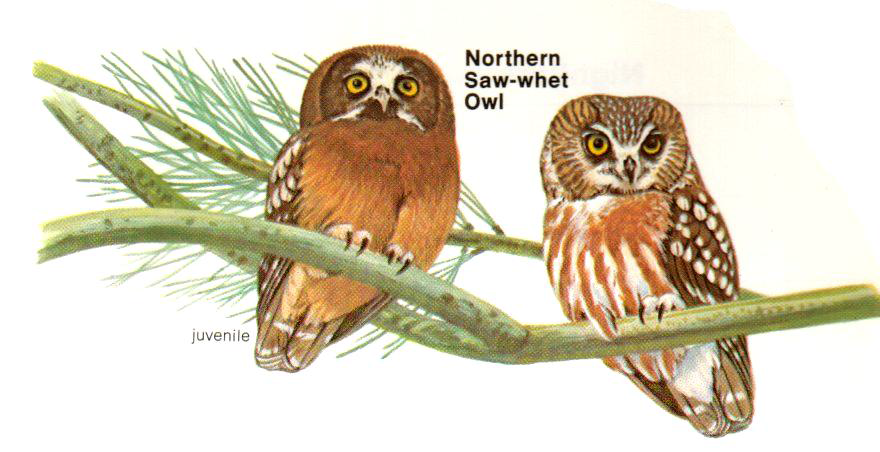
Northern Saw-Whet Owl
Some Saw-whet owls nest and breed in Santa Ynez Valley wilderness areas and on Catalina and Santa Cruz islands. Others from further up north migrate south to spend the winter in the higher elevations of Los Padres National Forest. They eat almost exclusively small mammals.
Burrowing Owl
Although burrowing owls were year-round residents in the past, this is no longer the case. Now we may only see a few of them that migrate from colder climates up north to our area in winter. They are unique little owls, just a bit larger than a Scrub jay, and although their name implies that they dig burrows, they actually co-exist with ground squirrels in large open grassy areas. The squirrels permit them to take over some spare burrows, and the owls raise their large clutches in them. Burrowing owls catch insects and small rodents, and are often seen active in the daytime.
